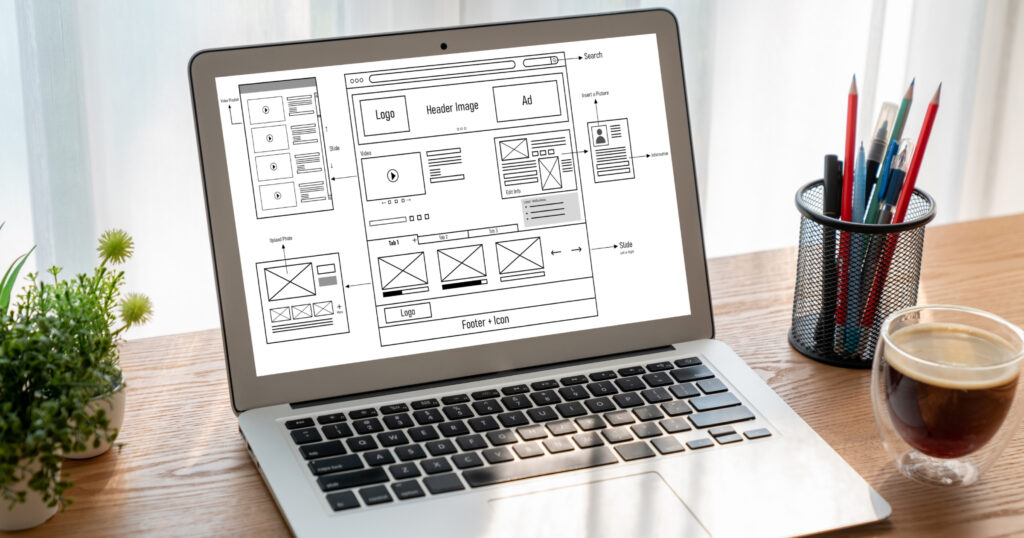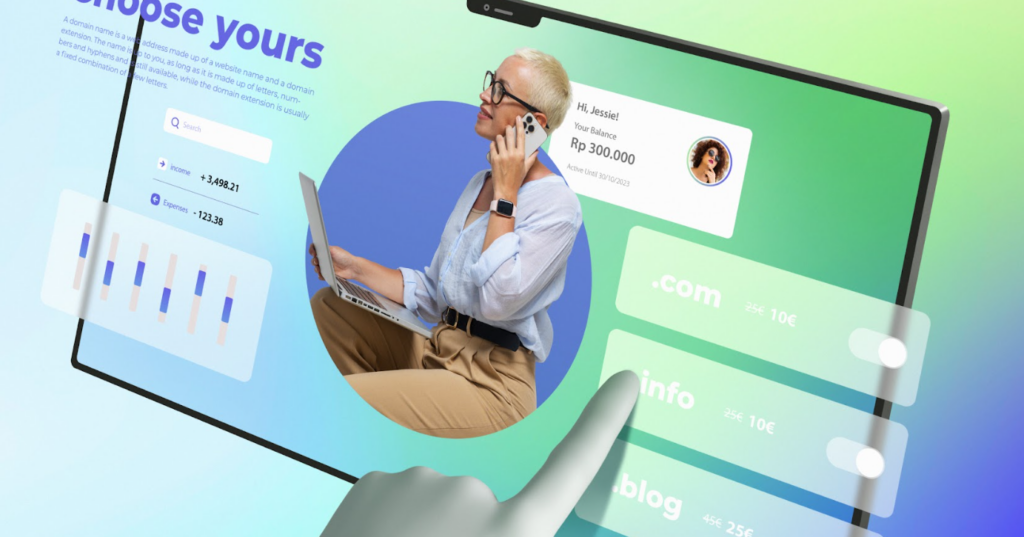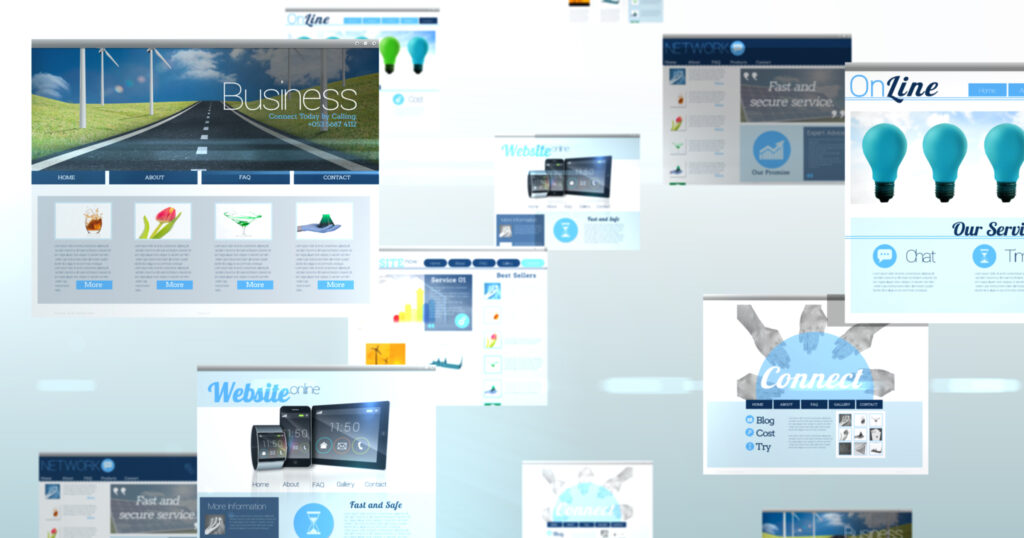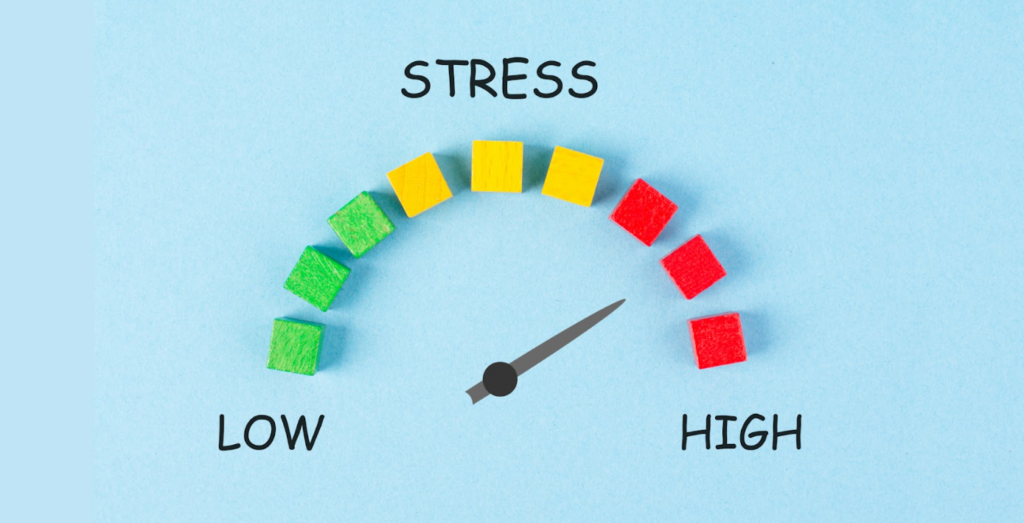Download Your Ultimate Landing Page Optimization Checklist Now
Some of your paid search campaigns soar to the top, while others barely get off the ground. Why? The reason for this may be your Google ads landing pages.
A tailored Google Ads landing page turns clicks into customers and visitors into fans.
An effective Google Ads strategy focuses on developing landing pages that boost conversions.
Let’s unveil the secrets behind a landing page that can raise or eliminate the success of your paid search campaigns.
If you’re not sure you can create a landing page yourself, you can turn to a Google Ads Agency to craft the best one for you.
Why Landing Pages are Important in Digital Marketing?

Users who encounter a clear call-to-action click on your ad seeking something specific – a product, service, or information.
A tailored Google Ads landing page ensures they land directly on a page that addresses their needs and interests.
Besides Google values relevance. When your Google Ads landing page closely mirrors the content and intent of your ad, it sends a strong signal to the search algorithm.
That’s why you need to craft high-converting landing pages.
The Role of Landing Pages in Paid Search

Imagine you meet someone for the first time. Would you wear a spacesuit to a beach party? Probably not.
Similarly, your Google Ads landing page is the first impression users get after clicking your ad.
Your PPC landing page must align with their expectations, look appealing, and provide the correct information.
Quality Score in Google Ads: Google’s Quality Score is like the guiding star of your paid search campaigns. Factors like click-through rate, ad relevance, and landing page quality influence it.
A well-optimized landing page can boost your Quality Score, which, in turn, can reduce your ad costs and improve your ad position.
Connection Between Ad Copy and Landing Page Content

Your landing page is the ultimate destination. Let’s ensure they align seamlessly.
Seamless Transition for the User: Users clicking your ad should feel smooth from the ad’s promise to the content they see.
Relevance and Consistency: Your brand’s consistency forms a familiar, reassuring pattern in the minds of your audience. If your ad promises a rocket to Mars, your landing page better not offer a bus ticket to the moon.
Your landing page content should align perfectly with what your ad advertises.
Landing Page Elements
We’ve touched down on Google Ads landing pages. Now, let’s uncover the key ingredients that make them shine:
- Clear and Concise Headline: Your headline is your first chance to make an impression. It’s the digital handshake, the “hello” to your visitors. So, craft it carefully because it can invite them in or make them leave.
Tip: Use words that ignite curiosity, solve a problem, or promise something valuable.
- Relevant and Engaging Visuals: Visuals on your Google Ads landing pages must be captivating and guiding. Use images that resonate with your message and create an emotional connection.

Tip: Avoid using stock photos. Authenticity matters. Choose visuals that reflect your brand and resonate with your audience.
- Compelling Call-to-Action (CTA): Time to guide your visitors toward the next cosmic adventure.
What Makes a Call-to-action Effective?
Your call to action should be like a magnet.
Use action-oriented words, create a sense of urgency, and clarify what you want them to do.
Placement, Color, and Text Considerations: Your call-to-action button’s location, color, and text matter more than you think.
Experiment and find what resonates best with your audience.
Trust Indicators

Building trust is key to successful Google Ads landing pages. Here is how you can do it:
- Incorporate Testimonials and Reviews: Real words from real people add credibility.
- Showcase Certifications and Awards: If you have badges, display them proudly. Certifications and awards are like medals of honor in the digital world.
- Mobile Optimization: In a world gone mobile, make sure you’re keeping up.
- The Rise of Mobile Users: More and more users browse and make decisions on mobile devices. If your landing page isn’t mobile-friendly, you’re missing out on a cosmic amount of potential conversions.
- Responsive Design Essentials: Your Google Ads landing page should shape-shift gracefully across screens of all sizes. A seamless mobile experience is non-negotiable.
Tailoring Your Landing Page for Your Target Audience

In this age of information overload and endless choices, connecting with your audience is crucial.
It will help if you tailor your landing page to meet your target audience’s distinct desires and challenges.
This is how you can do it:
Understand Your Buyer Persona: Picture your ideal customer. What do they want, what do they need, and what keeps them up at night?
Understanding your buyer persona guides your landing page design, helping you speak directly to the souls you aim to reach.
Why They’re Crucial for Landing Page Design: A landing page designed with personas in mind is like a personalized guide. It ensures that your visitors feel like you’re speaking directly to them.
It leads to more clicks and conversions.
Use Google Ads audience targeting: Ensure your landing pages are seen by the right people. By understanding and segmenting your audience, you can craft content that speaks directly to their needs and interests, leading to higher engagement and conversion rates.
Segmenting Traffic for Personalized Experiences
Now, let’s take a closer look at how you can create tailored Google Ads landing pages by segmenting your traffic.
Tools for Segmentation: Segmentation tools allow you to divide your audience into groups based on location, behavior, or interests.
For instance, email marketing platforms like Mailchimp offer audience segmentation features that let you send personalized messages to different segments of your subscriber list.
Benefits of Tailored Landing Pages

Google Ads landing pages play a crucial role in driving campaign success. Tailoring your landing pages to match your target audience’s specific needs and interests can significantly enhance your ad performance.
By focusing on creating personalized and relevant Google Ads landing pages, you can experience numerous benefits:
- Higher Conversion Rates: A tailored landing page makes your audience more likely to take the desired action, whether purchasing, signing up, or downloading content.
- Improved User Experience: A personalized landing page creates a smoother and more relevant journey for your visitors, reducing bounce rates and keeping them engaged.
- Better Data Insights: By segmenting traffic and creating a tailored landing page, you gather more focused data on user behavior. It allows you to optimize your future campaigns for more significant results.
Pain Points and Solutions
Your audience faces challenges and concerns in digital marketing as they navigate different pages. But to satisfy your customers, you must create a landing page offering solutions to your audience’s pain points.
Identifying Common Pain Points: The audience’s pain points could be anything from not finding the correct product information to concerns about data security.
You can conduct Google Ads competitor analysis and gather data and feedback to pinpoint these pain points.
Tailoring Content to Offer Solutions: Once you’ve identified the pain points, your landing page becomes the launchpad for solutions.
If your audience worries about data security, you can prominently display your security certifications and practices.
If they seek product information, ensure it’s clear and comprehensive.
By addressing pain points and offering solutions, your landing page becomes a source of cosmic relief and a catalyst for conversions.
Maximizing Conversions

You aim to transform curious visitors into loyal customers. But how do you navigate this journey effectively? Let’s explore some powerful tools.
The Power of A/B Testing
The A/B Testing method requires flexibility to test and compare two or more landing page versions. Conversion rates, whether that means more clicks, sign-ups, or sales, will show you which version performed better.
Tools and Strategies for Effective Tests
Google Optimize, Optimizely, and VWO (Visual Website Optimizer) are some of the best tools for conducting A/B testing.
These tools enable you to experiment with elements like headlines, images, CTAs, etc.
For instance, if you’re running an e-commerce site and you want to boost your product page’s conversion rate, you can test two versions: one with a “Buy Now” button in red and another with it in green.
You can follow user behavior and conversions by determining which color drives more sales.
Using Analytics to Understand User Behavior
In digital marketing, data is your guiding star. Here’s why:
It tells you where you’ve been and where you’re going. So, you gather insights about user behavior and aim to improve them.
Google Analytics: This versatile tool offers vast data on user behavior, traffic sources, and conversion tracking.
Look for key metrics like bounce rate, time on page, and conversion funnels to identify areas for improvement.
Hotjar: Hotjar provides heatmaps, session recordings, and user surveys. Heatmaps reveal where users click and scroll the most. Session recordings allow you to watch how visitors interact with your landing page.
Look for trends in heatmap data and usability issues in session recordings.
Mixpanel: Mixpanel focuses on user-centric data, offering insights into user actions and events.
Pay attention to user retention rates, funnels, and event tracking to understand how users navigate your landing page and what actions lead to conversions.
Download Your Ultimate Landing Page Optimization Checklist Now
Minimizing Distractions & Improving Load Speed

Now, let’s ensure your landing page is a smooth cosmic ride, free of turbulence:
Slow-loading pages are one of the most disturbing things in digital marketing.
You need to improve your page speed to engage your audience.
Tools to Check and Improve Speed
Consider tools like Google PageSpeed Insights and GTmetrix. They analyze your landing page’s load speed and provide recommendations for improvement.
Compressing images, optimizing code, and using content delivery networks (CDNs) are some strategies to boost load speed.
Seamless Form Integration
In the digital journey of user interaction, forms are the checkpoints where visitors share valuable information and take action. Making this process seamless is like greasing the wheels of your conversion machine.
Importance of Frictionless Forms
Friction is the enemy when it comes to forms. The smoother the process, the more likely visitors are to complete it. A frictionless form reduces barriers and encourages user engagement.
Best Practices for Form Design
- Minimalism is Key: Include only essential fields. Reducing the number of required inputs simplifies the user experience and increases completion rates.
- Clear Labels and Hints: Use clear and descriptive labels for each form field. Provide helpful hints or examples to guide users in providing the correct information.
- Mobile Optimization: Ensure your forms are responsive and easy to use on mobile devices. Mobile users should have a seamless experience, with fields and buttons optimized for touchscreens.
Maintaining Brand Voice and Visual Consistency

Your brand should have a unique voice. It’s the tone and style of your messaging. Whether friendly, formal, or quirky, it should remain consistent across ads and your landing page.
Importance of Cohesive Branding
Every element of your brand should align harmoniously: your logo, colors, fonts, and imagery. Consistency here creates recognition and trust.
When visitors encounter your brand, they should feel the same vibes from your ad to your landing page, reinforcing the connection and trust.
Importance of Relevant Ad Group to Landing Page Mapping
Your ad groups are puzzle pieces, each with its unique shape and place in the marketing puzzle. Organizing your ad groups involves grouping related keywords and ads.
This helps maintain order and clarity in your advertising.
Negative keywords are also crucial to ensure your ads are only shown for relevant searches.Thus you prevent your ads from being triggered by irrelevant search terms, which helps to improve ad relevance and landing page alignment.
This practice ensures your audience finds the most pertinent landing pages, enhancing their overall experience and boosting your campaign performance.
Advanced Tactics for Growth Marketers

Now, let’s venture into advanced strategies for growth marketers aiming to propel their digital campaigns to new heights.
Use Google Ads reporting to get insights into your campaign performance and make your landing pages more effective. This helps you see which keywords and ad copy work best. Using this data can improve your landing pages and get better results.
Dynamic Text Replacement for Ad Personalization
Imagine a tool that allows your ads to adapt like a chameleon in response to each visitor’s unique needs and preferences.
What is Dynamic Text Replacement?
Dynamic Text Replacement (DTR) is a technique that tailors your ad’s content to match the search terms or context of the user.
For example, if someone searches for “luxury watches,” DTR can ensure your ad displays “Discover Luxury Watches” as the headline.
Benefits and How to Implement
To implement DTR, you’ll need to use a tool or platform that supports it. For instance, Google Ads offers ad customizers that enable DTR by inserting parameters like {KeyWord: Default Text}.
Immediate engagement is the key to capturing and retaining your audience’s attention. Why not leverage chatbots to your customer support team?
Using Retargeting with Landing Pages
When strategically combined with a landing page, retargeting becomes a potent tool for nurturing and converting those who have previously shown interest.
Basics of Retargeting
Retargeting is a way of online advertising. It focuses on people who visited your website but didn’t buy anything or fill out a form.
It shows them ads for your brand while they’re surfing the web on other sites, reminding them about what you have to offer.
Strategies to Combine Retargeting with Landing Pages
Personalized Messages: Make ads that match the landing page a person saw. This makes their experience smooth and personal, reminding them about your product or service.
- Bring Back Abandoned Carts: If you sell things online, use retargeting to remind people about stuff left in their shopping carts. Send them to a special page with deals to encourage them to finish their purchase.
- Step-by-Step Engagement: Help people move closer to buying by using retargeting with your landing page that meets their changing needs and interests. Start with helpful info and guide them toward taking action.
- Timing and Amount: Be careful not to show retargeting ads too often so you don’t bother people. Think about when the ads show up to make sure they fit and aren’t annoying.
- Show What They Liked: Display the products or services someone checked out on your site in ads. Make special pages for those items to make it easy for them to learn more and buy.
By using retargeting with Google Ads landing pages, you can get people interested again and guide them to buy. It’s like re-engaging in the big world of digital marketing.
Integrating Chatbots for Immediate Engagement
Chatbots, with their ability to engage users instantly, provide real-time interactions. They’re like the friendly concierge guiding visitors through your page.
Best Practices for Chatbot Integration
Strategic Placement: Position chatbots strategically on your landing page, such as near key conversion points or areas where visitors often seek assistance.
Clear and Concise Messaging: Craft clear and concise messaging for your chatbots to ensure visitors understand their purpose and capabilities.
Human Touch: Make your chatbots feel like helpful assistants, capable of answering questions and providing guidance in a friendly and approachable manner.
Leveraging Videos for Enhanced Engagement
Videos can light up your campaigns with enhanced engagement and conversion potential.
Why Can Videos Boost Conversions?
Videos grab the audience’s attention and hold them, conveying information engagingly and dynamically. Plus, they can evoke emotions and create connections.
Tips for Effective Video Content
- Keep your Videos Concise: In the digital world, attention spans are limited, so aim to deliver your message efficiently and without unnecessary fluff.
- Tell a Compelling Story: Weave a narrative into your video content. Whether showcasing your brand’s journey or solving a common problem, storytelling can captivate and keep your audience engaged.
- Ensure Mobile-Friendly Format: Optimize your videos for mobile viewing. With a growing number of smartphone users accessing content, responsive video formats are essential for a seamless user experience.
Common Mistakes and How to Avoid Them

Overcomplicating Design
Complexity swallows user engagement. Simplicity, on the other hand, invites users in. Keep your design clean and intuitive, guiding users effortlessly toward conversion.
Less clutter, clear navigation, and a user-friendly interface can keep visitors engaged for a long time.
Avoiding Common Design Pitfalls: Watch for pitfalls like overcrowded layouts, confusing navigation menus, and slow-loading elements. Regularly review your design to ensure it aligns with your audience’s preferences and needs.
Ignoring Mobile Users: Embrace mobile-first design as users expand on smartphones. Ensure a smooth experience by testing your landing page on different devices.
Not Testing Different Versions: Experiment with different landing page versions to find what resonates best with your audience.
Neglecting Post-Conversion Engagement: The journey doesn’t end at conversion; it’s a continuation. Develop strategies to keep users engaged after they’ve taken action, nurturing their ongoing connection with your brand.
Successful Startups and Their Landing Page Strategies
Let’s delve into the landing page examples of some remarkable startups.
1. Dibbs
Dibbs is one shining example of a startup making waves in the market.
It’s a platform that emerged during the challenging era of the COVID-19 pandemic. Dibbs specializes in vaulting, minting, and distributing digital collectibles using innovative tokenization tools.
Dibbs’ landing page is a lesson in logical and user-friendly design. They showcased the essential elements. Two bright-green buttons, set against a bright-green background, draw the eye immediately.
Dibbs employs three CTAs, each encouraging different actions. While this approach provides versatility, it also introduces a subtle competition for users’ attention.
2. Jasper
Jasper embraces the power of social proof to illuminate its path to success. Testimonials make your offer believable and irresistible.
Jasper takes the concept of social proof and weaves it into the fabric of its landing page strategy. You can find it everywhere and in every form, ensuring that a sense of trust and reliability surrounds visitors.
93% of consumers rely on reviews when dealing with unfamiliar businesses. So, the pursuit of social proof is advantageous.
3. Daily Harvest
Daily Harvest shines through captivating visuals.
In the digital age, people crave authenticity. They want to see your product or service in action, not just as abstract graphics or imagined concepts.
Daily Harvest understands this truth and places it at the heart of its landing page strategy.
Key Takeaways for Your Business
Startups face numerous challenges, from idea validation to scaling marketing efforts.
Landing pages offer an invaluable tool to navigate these challenges efficiently.
Google Ads landing pages are cost-effective, rapid to deploy and provide a platform for testing and replication.
For resource-conscious entrepreneurs, they are a game-changer.
Complexity isn’t the recipe for success. Keep your landing page simple and focus on the essential elements.
We can help you create a high-converting landing page if you need assistance.
Your Success Starts with Your Landing Page
As we’ve explored, your Google Ads landing pages are the keystone of a successful digital marketing strategy.
However, the journey continues. It’s an ongoing process of optimization and learning. The digital landscape is ever-evolving, and staying ahead requires continuous refinement of landing page strategies.
To support your ongoing efforts, ensure you have our Ultimate Landing Page Optimization Checklist by your side. Download it now.
Keep experimenting and stay committed to crafting a landing page that resonates with your audience.

